The Great War, fought during the intervals between 1914 and 1918, caused massive devastation to humankind and physical infrastructures.
Humans proved to be very ingenious in terms of the progression of armament.
Initially, arrows, swords, and missiles were prevalent, gradually replaced by advanced guns, pistols, rifles, and flamethrowers in the first world war.
Riffles were the most common ammunition in World War 1 as all the armed forces from the Triple Entente and the Triple Alliance equipped their infantry with endless rifles.
An estimated 11 million rifles were manufactured and possessed during the first world war.
Some popular rifles the powerful nations involved in the conflicts were the Lee-Enfield 303, Mosin-Nagant, Lebel and Berthier, and Steyr-Mannlicher, which caused endless casualties.
Riffles
Content
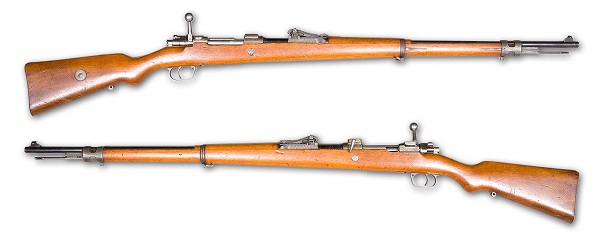
A bolt action weapon named rifle that fired a .303 caliber round weighing about 8,6 pounds was profusely used during the starting days of 1914s.
They were supplied with a sword bayonet fitted to the SMLE containing a 17 inches blade to bayonet a minted soldier by a foot soldier easily.
The SMLE was considered the most reliable and highly accurate, capable of making 37 rounds per minute in world war 1.
The Imperial German Army used the 7.92mm Gewehr rifle as the standard arm developed by Paul Mauser in 1898.
The Mauser fired the high-velocity “the S rounds” with a muzzle velocity of 2882 ft per second; however, the rifle malfunctioned in its magazine.
Similarly, the British rifle .303 with round barrels discharged at a 2060 ft per second velocity, while the soldiers did not need to make ballistic adjustments for distant targets.
The British Lee-Enfield round could reach 10 ft while the Mauser only peaked 6 ft.
The technology used in riffles
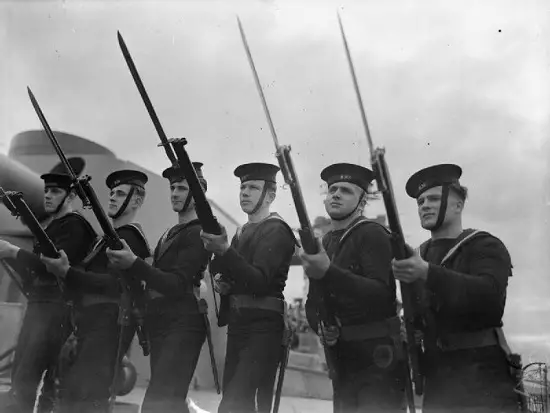
The riffles frequently brought into application thrived between 1886 and 1903, with a fluctuating diameter ranging between 6 and 8 millimeters.
The weapon had a manual locking mechanism and three to ten cartridges at the terminal of the barrel.
Standard European riffles contained adjustable bayonets, which were modernized to have reduced caliber and enhanced firing distance. In addition, France added nitrocellulose powder, famous as the “smokeless powder.”
The powder was of great significance in eliminating white smoke that obscured the vision of riflemen and exposed his locations to the rivals.
There were several variations of riffles based on their size, length, and shape. The shorter riffles were called carbines, having a length of 125 centimeters, used in trench warfare for self-defense.
Some of the rifles used in the first world war areas are listed below:
Enfield Pattern Riffle (.303 pattern, 1914)
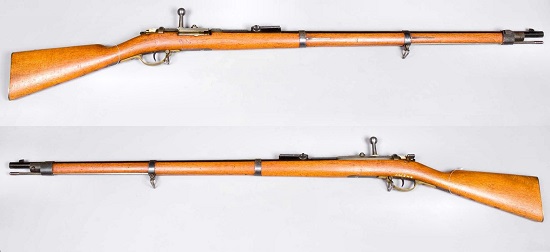
The .303 pattern service rifle was a British Pattern rifle that emerged during the great war in 1914.
It was built after the Boer war when the British faced an accurate long-range rifle, “Mauser,” as the conflict prompted them to develop a magnum.
After several advancements, the final product .303 P14 rifle was launched into British infantry; however, its evolution was derailed due to warfare.
The British authorities contracted with the United States to mass-produce the weapons as Other wartime commitments bound British industries.
It was designed with a five-round internal box magazine, prominent sight protection ears, and dog-leg handles.
The Pattern Enfiled was made up of nickel-steel bolt and bolt travel for rapid firing, unlike cock-on action that led to instant heating due to rapid-fire.
The rifle had an iron sightline with a rear receiver aperture calibrated 300-1000 yards.
Similarly, the sturdy ears on the receiver made it more reliable and faster than Mauser, and the advanced aperture with a long sight radius contributed to fidelity and durability.
Federov Avtomat M1916

The Federov Avtomat was Russia’s first operational automatic rifle, designed in 1915. It was used extensively after the first world war during the Russian Civil War and the Winter war, although it was produced for the great war.
Russians assembled around 3200 rifles during 1915-1924, the ancestor of modern-day assault rifles.
Vladimir Fyodorov coined the idea of the automatic rifle after witnessing the French “Chauchat,” a lightweight machine gun.
Federov was a short coiled, breech-locked weapon made by mounting symmetrical plates on either side of the breach that hurled from a closed bolt.
It had 25-round magazines of 6.5×50 mm cartridges for lighter recoil. It had a single wooden piece style body that contained stock, grip, and handles, while the metal components made up the receivers.
Iron sights were placed on top with a slotted metal supposedly perfect for short recoiling.
The rifles were issued to a company of the Izmail Infantry Regiment during the first world war with self-loading automatic rifles equipped with sniper scores and select firing.
Federov was the first official sniper Russian rifle.
Arisaka Type 44 Cavalry Rifle
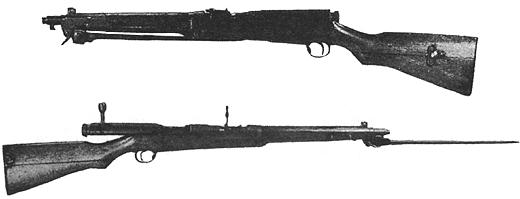
The Arisaka Type 44 was a standardized bolt-action Japanese rifle designed by a gunsmith named Baron Arisaka Nariakira in 1911.
It was accepted by the Imperial Japanese Army in 1912 and existed until the second world war. It was a shortened form of the Type 38 rifle to enhance the traditional long-bodied rifles with a more compact body.
A needle-type bayonet was fitted in the rifle for easier folding backward and locking forend when not used.
The wood-encased barrel was made for minimal projection of the muzzle, whereas the metal components were fitted in the occiput portion of the receiver.
Likewise, iron sights were also placed at the muzzle. The Type 44 rifle measured 38.3 inches in length and approximately 7.28 pounds to fire a 6.5×50 mm cartridge.
The carbine had 5-round stripper clips based on the internal magazine of the rifle.
Springfield Model 1903
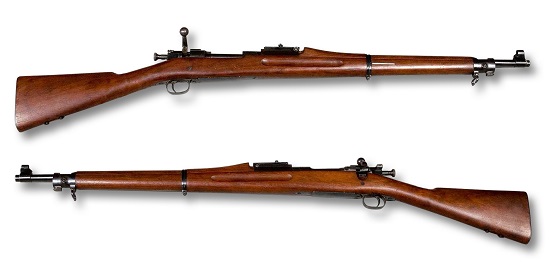
The Springfield Model 1903 was the most significant U.S military issue during the first world war that continued to be in practice until World War 2.
Americans adopted the design from the famous German Mauser rifle. It had a reliable mechanism for accurately distancing targets typically used for defense duty and support guards.
A pointed bullet-styled 150-grain cartridge weapon was highly conventional for a service rifle and a carbine.
A long wooden banded body of double pieces had internal metal linings that measured 30 inches in length that were gradually cut down to 24 inches for a more compact shape.
The internally fixed magazines were prefabricated with around five ready-to-fire cartridges. Sling loops were attached under the forend, and iron sights at the front assisted in accurate firing range.
Ross Riffle
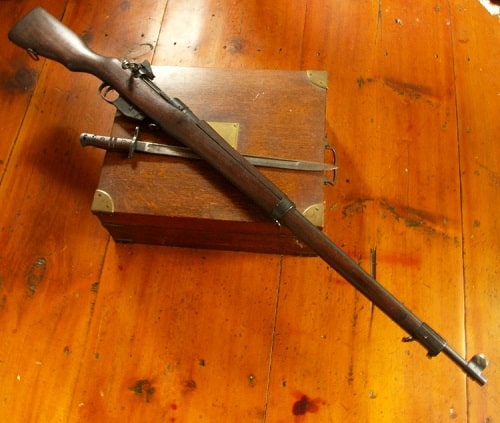
The Ross was a pull bolt action rifle from Canada during the first world war, mainly necessary for target shooting.
Charles Ross developed it after the United Kingdom refused to license the SMLE production in Canada.
It was a conventional rifle with long gun firearm pieces and its metal components embodied into a single wooden plank. The body contained a grip handle, shoulder stock, and forend.
The metal body was joined to the wooden piece at an extended distance from the forend, and the bolt handle was slung over the right side while the trigger was placed near the grip handle.
A folding leaf arrangement was made on the mid-way of the gun along with sling loops at the shoulder stock, pistol grip, and a strap for easy transportation.
It had a 7.5×56 mm cartridge inserted as individual loose rounds in a magazine.
Berthier Rifle
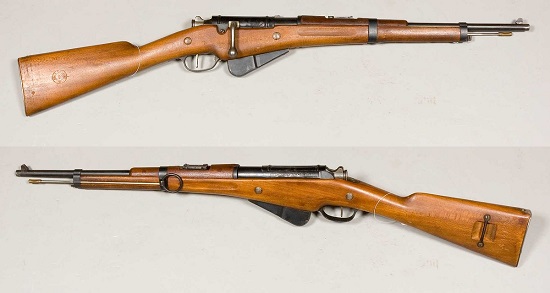
The French military used the Berthier rifles that offered a revolutionary smokeless cartridge with a small caliber.
From 1890 to the beginning of world war I, a replacement for the Lebel rifle. It was constructed conventionally with metal parts laid on the wooden frame.
As a single barrel was connected to the stock, the trigger fitted under the action in a typical design.
The Berthier had turned down bolt handles and sling rings weighing about 3 kgs with 945 mm length.
They were indeed reliable and robust with three-round magazines despite being heavy.
Fucile Modello 91

Fucile Modello 91 was an Italian bolt action magazine-fed rifle developed by Salvatore Carcano in 1890.
It replaced the Vetterli-Vitali carbines and rifles used as both rifle and carbine.
It had a 6.5×53 mm firing cartridge with a 2300 rounds per minute muzzle velocity.
The Fucile Modello had a 30 inches long barrel with a fixed mounted spiked barrel bayonet.
Conclusion
In summary, vast destruction was called upon lives and infrastructures during the major battles with extensive arms and ammunition. Rifles were used to make trench warfare and artillery useless.
Each nation was consistently trying to beat off the other in terms of military advancement, starting with a rifle that could fire 15 to 37 rounds per minute.
More prominent magazines were fitted into the bayonets majorly used by German.
These weapons revolutionized warfare forever and paved the path for further progression of assault rifles and machine guns in the future.
